Area UU History
The Clinton Liberal Institute
1831 – 1878
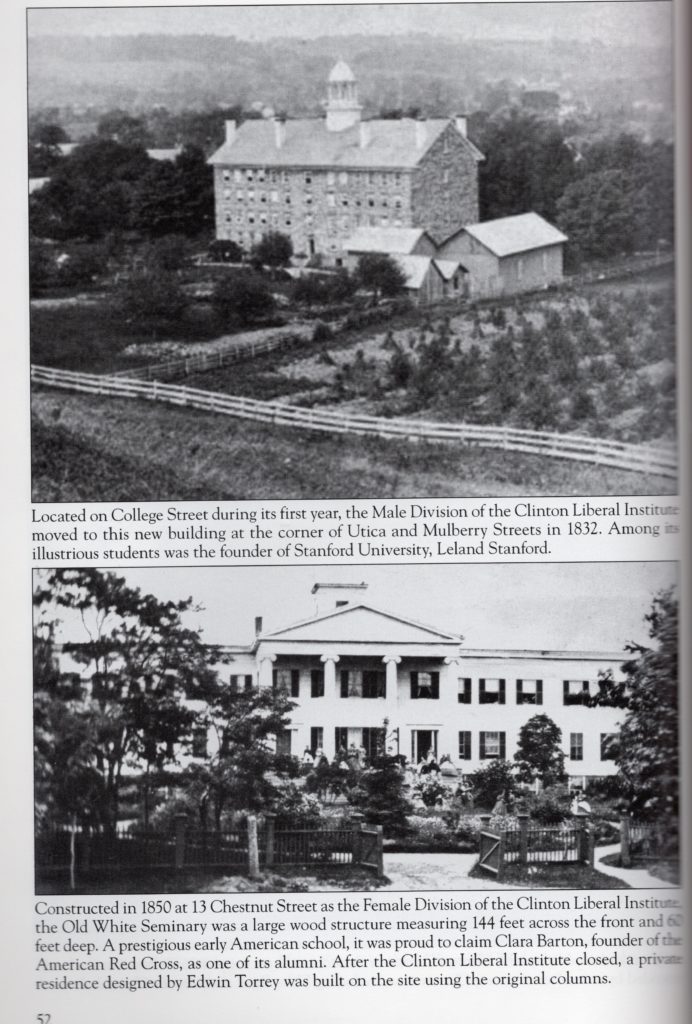
In 1831, the Central Association of Universalists met in Cedarville, NY and decided to build a private boarding school to be located in Clinton. The executive committee included Joseph Stebbins and John Hale of Clinton, David Pixley of Kirkland, Timothy Smith of Augusta and Ezra S. Barnum of Utica. Universalists had been the subject of slander by Charles Finney and others who conducted religious revivals in the area. The goal was to protest the intolerance of some other religious schools.
The plan was to have a male and a female division in separate structures, including a free library and a farm to provide work-study for students. The school was housed in a building on College St until the male division could be completed on the corner of Utica St. and Mulberry St. in 1832, It was an imposing stone structure of four stories with outbuildings. Only one of the barns, now located behind 1 Mulberry St., remains.
An illustrious minister, Rev. Thomas J. Sawyer, who was described in his obituary as the “most noted clergyman of the Universalist Church in the century” served as principal from 1845 – 1852, and 1861 – 1863. He is best known as a leading founder of Tufts College in New Medford, MA in 1847 (later becoming Tufts Divinity School), St. Lawrence University in 1856, and Canton Theological School in 1858. The theological school artifacts are now housed in a museum at St. Lawrence University.
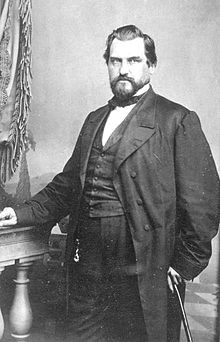
A well-known alumnus of the school was industrialist Leland Stanford. He was governor of California from 1862-63, and U.S. Senator from 1885 – 1893. With his wife, Jane, he founded Stanford University, named after their son.
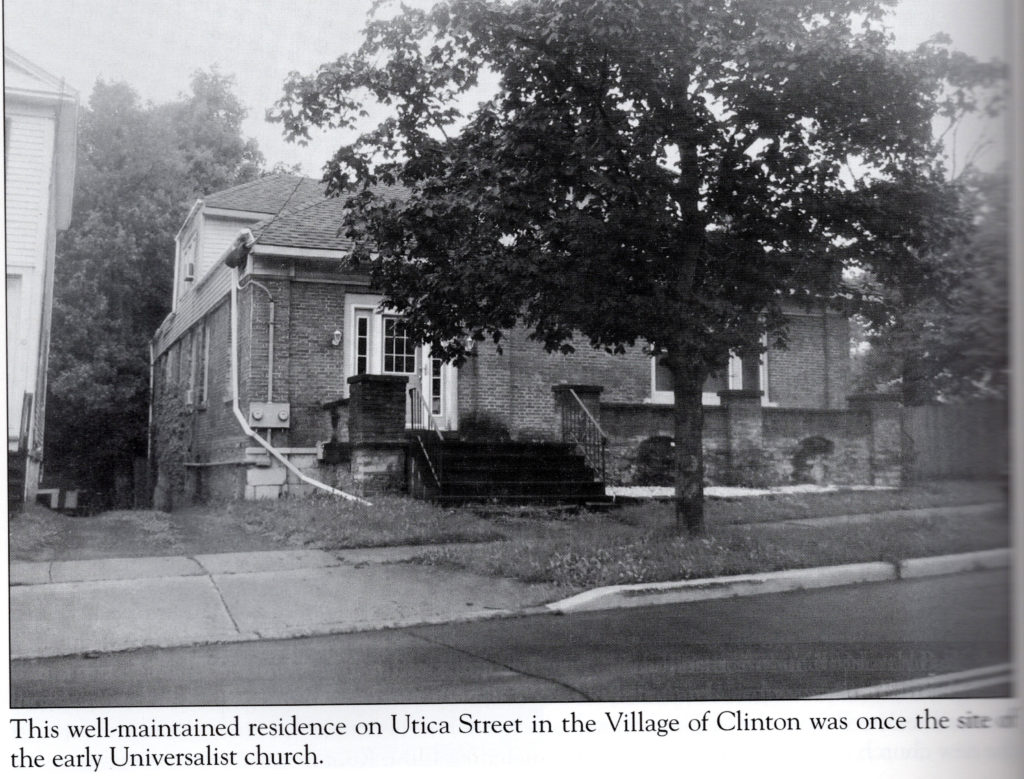
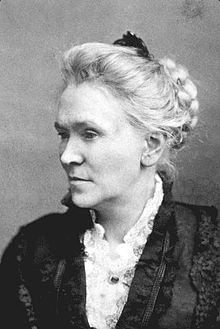
The female division of the Clinton Liberal Institute also had several famous alumnae, Clara Barton, and Matilda Joslyn Gage. Ms. Gage attended the early two-floor school in 1841-42, when it was housed at 14 Utica St., near the Universalist Church at 8 Utica St. (both now private homes). She was a vocal advocate of women’s rights, a member of the National Woman’s Suffrage Association, and out-spoken against slavery, offering her home in Fayetteville to be part of the Underground Railroad. Her daughter married L. Frank Baum, author of the Wizard of Oz.
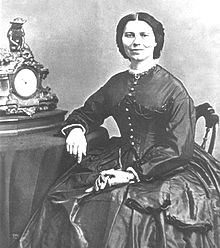
Clara Barton attended the female division of the Institute in its new home, constructed in 1850 at 13 Chestnut St. It was an arduous journey from her home in Oxford, MA, first by sleigh to the train to New York City where she boarded a boat to Albany. There she took a train from Albany to Utica, and from there by sleigh to Clinton, she roomed at the Clinton House and had to trudge up Williams St., then a plank road leading to the Institute. She must have been determined, a quality which gave her the fortitude to become a nurse during the Civil War and later to found the American Red Cross.
The original imposing school on Chestnut St. was torn down to become a large private home, but the original columns were retained. It is a popular venue for trick or treaters at Halloween.
The male division of the school was forced to move to Fort Plain, New York in 1879 because of financial problems and the deteriorating condition of the building. At this time, public schools were being developed. Housed in the former Fort Plain Seminary building, it was situated on a hill overlooking the Mohawk Valley until a fire in 1900 caused its demise. All funds were transferred to the New York State Convention of Universalists, which supports various projects by Universalist Churches in New York State, including the Utica Church.

Information courtesy of Richard L. Williams, Town and Village Historian, Wikipedia, and Clara Barton: Professional Angel by Elizabeth Brown Pryor, 1987.
Thanks to JoAnn Gilles, and Rose Raymond for permission to post
Unitarian Church of Barneveld
Our sister church
In 1793 Garret Boone, first agent of the Holland Land Company, cut a path through the forest from Fort Schuyler to the Cincinnati Creek. He located his cabin here called it Oldenbarneveld after a patriot martyr of Holland.
It was here that the congregation, first known as the United Protestant Religious Society of Trenton, was organized in 1803. Prominent founders, Francis Adrian Van der Kemp and Adam Mappa, had fled Holland after an unsuccessful uprising to establish representative government. Van der Kemp, a Baptist minister with a reputation for religious liberalism, Mappa, and others who joined them, sought to establish a religious institution dedicated to freedom of conscience. There was no mention of creed or doctrine in the test for membership, only that “the applicant be a person of good moral character.”
This Church continues to stand for those who believe in the right of individuals to govern themselves and make up their minds in the realm of ultimate beliefs and commitments.
With a keen appreciation for history, we strive to preserve our two buildings with respect for the past. The church was erected circa 1816 and Unity Hall circa 1896. Unity Hall is leased to a local, non-profit organization…sponsors community events and Unitarian Church School is held there.
Taken from the welcoming brochure of the Unitarian Church of Barneveld
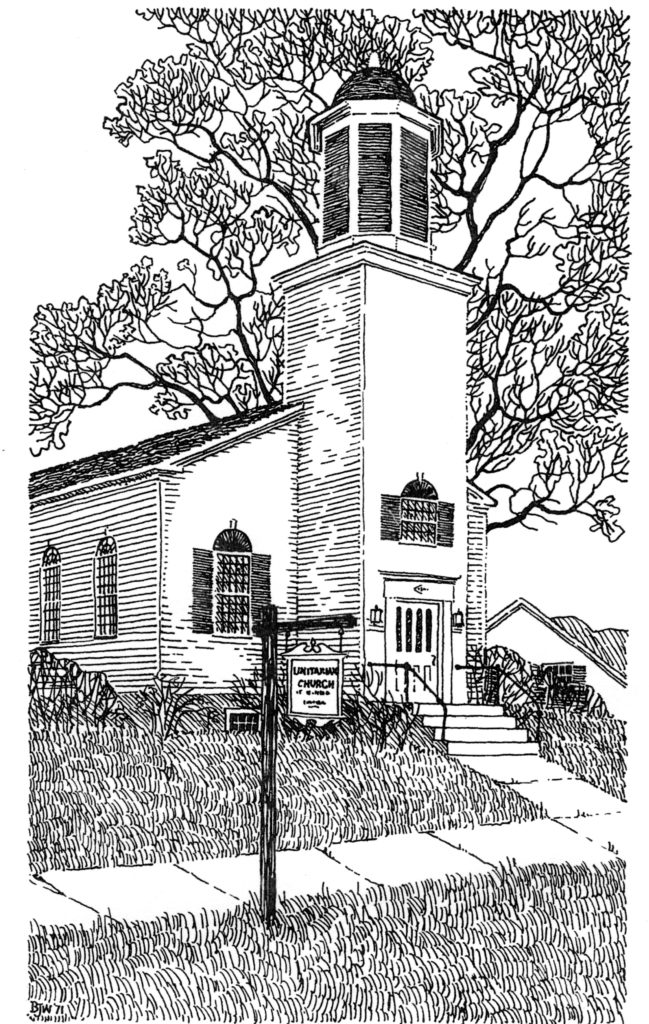
UU Utica has a yearly pilgrimage in June with the Barneveld church with a luncheon at Unity Hall.
Thanks for permission from Jon Tittler to post
St. Paul’s Universalist Church of Little Falls
The roots of Universalism in the Little Falls area go back to between 1814 and 1816 when a society was formed in Eaton’s Bush. Hosea Ballou preached in Eaton’s Bush, attracting the attention of people in Little Falls. In about 1818, Dolphus Skinner began the occasional ministry which he continued for many years.
As early as 1829, a Universalist Society met in Little Falls in various locations and by the 1830’s a definite attempt was made to establish a church. In 1842, Dolphus Skinner and Aaron B. Grosh were hired to preach alternately, with Dolphus Skinner preaching the first sermon on October 2, 1842 in the Old Stone School House. In 1844, a new church building was dedicated in which the Universalists had a half-interest with the other half being divided between the Methodists and the Baptists.
In 1848, the Rev. J. R. Harter became the first settled minister of Universalism in Little Falls. During his ministry, on May 3, 1851, the present organization was formed as the First Universalist Society of Rockton. The corner stone of the current building was laid in 1867. It was dedicated on June 9, 1868 and the name “Saint Paul’s Universalist Church of Little Falls New York” was adopted. With the merger of the Unitarian and the Universalist denominations in 1961, the congregation became a member of the Unitarian Universalist Association. In 2011, St Paul’s celebrated its 160th anniversary.
Taken from the website: http://www.littlefallsuu.org/

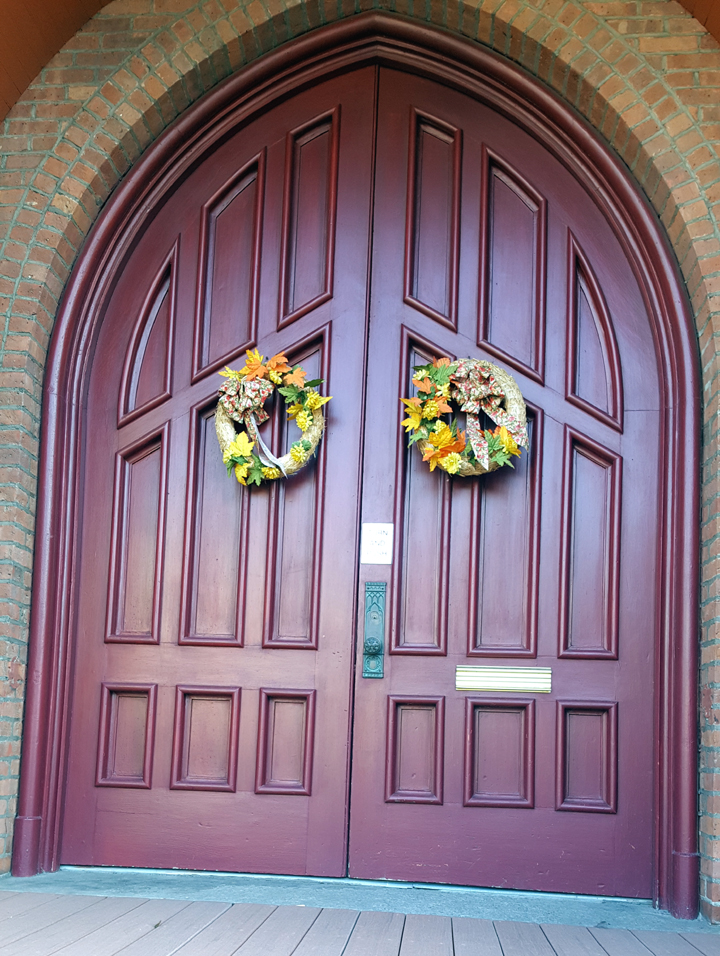
Thanks to Jeff Frank for permission to post
 10 Higby Rd
Utica, NY 13501
10 Higby Rd
Utica, NY 13501
